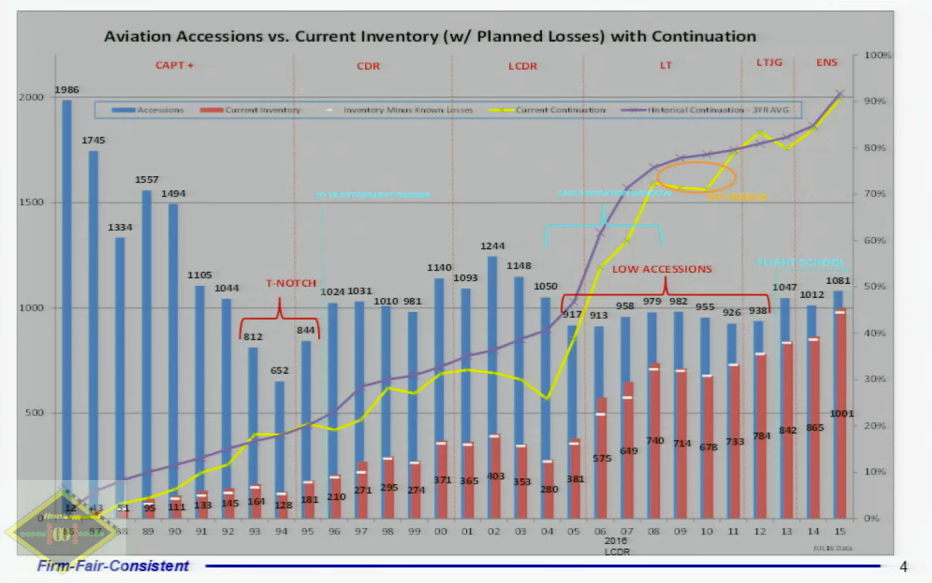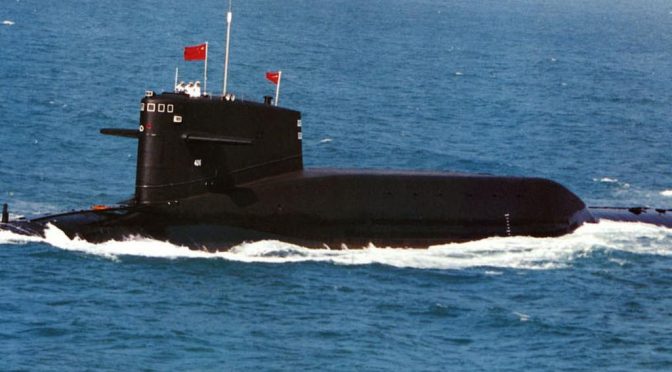By Steve Wills
Introduction
The incoming Trump administration has called for a 350-ship navy as one of its core defense goals. This number is a good start for adding capability to the U.S. Navy after nearly two decades of force structure reductions. The call for 350 ships, however, is not enough. Such a call must be supported by a new global maritime strategy that draws inspiration from the 1980s Maritime Strategy created to oppose the Soviet Union on a global maritime battlespace. Any ship count by itself is prone to criticism on the grounds of cost or capability. The 1980s Maritime Strategy offers an example on how to intertwine strategy and necessary fleet strength in order to achieve a desired capability that supports national military strategy. The incoming Trump administration should follow the 1980s blueprint in its quest for a U.S. Navy capable of meeting present and future threats.
Arguing for Ships and Strategy
U.S. Naval strategy since 1991 has in effect been the management of desired and financially supportable force structure over time. In June 1990, incoming Chief of Naval Operations Admiral Frank Kelso famously put the 1980s Maritime Strategy “on the shelf” and in response to a question on naval strategy from Senator John McCain replied, “I think we need an enemy in order to have a strategy.” The collapse of the Soviet Union in 1991 left the U.S. without a significant naval opponent around which to build a global strategy. The case in 2016 is very different. The Secretary of Defense and the Chairman of the Joint Chiefs of Staff now say the U.S. faces “4+1” potential opponents (China, Russia, Iran, North Korea, and violent extremism) a threat lineup unequaled since the early days of the Cold War. Admiral Kelso’s requirement for an enemy in order to require a strategy seems to have been met.
Calling for more ships alone in the absence of a defined strategy guiding their employment is not enough. There were several fleet strength analyses done in the 1970s to determine the best fleet size that could be sustained within a given budget. CNOs Admiral James Holloway and Admiral Thomas Hayward, and Navy Secretary Graham Claytor and his deputy R. James Woolsey, analyzed fleets ranging in size from 400-1000 ships. The results of their work all tended to center around 580 ships. At the same time, Admiral Hayward was experimenting with new naval strategy concepts as the Pacific Fleet commander to take a global fight to the Soviet Union rather than just shepherd parts and supplies across the Atlantic in support of NATO; a mission the Navy described as hauling “ash and trash.” Neither concept — whether larger fleet size or new strategy –was likely to go far by itself. Any ship number was open to financial or capability criticism from analysts or members of Congress asking, “won’t 550 ships or 540 ships work just as well and at less cost than 580 vessels?” Likewise, new naval strategy concepts have been previously dismissed by Congressional budget analysts as not reflective of financial reality. The label of “not cost constrained” was enough to limit the influence of new strategic concepts to wargames and think tank discussions rather than actual application.
Navy Secretary John Lehman famously combined these ideas: a global naval strategy and a specific number of ships at a reasonable cost required to achieve their purpose. Lehman’s June 1985 presentation to the House Seapower Subcommittee stated that the 600-ship navy had to be affordable as well as meet strategic requirements. Affordability was to be achieved through more competition among industry providers, more efficiency within the Navy Department, and decentralization of Defense bureaucracy as a means of achieving these goals. High technology should be exploited, but not at the expense of what Lehman called, “Research and Development Rainbows” that created a situation where, “perfect became the enemy of good enough.” There was also an expectation that fleet operational tempo would be decreased.
The 1980s Maritime Strategy, combined with an effective 600-ship navy that could be purchased at reasonable cost, proved to be a stable foundation of effort for the naval services in the 1980s. Fleet strength neared 600 ships by the end of the decade and the Maritime Strategy saw multiple updates that made it in the words of one of its authors, “more joint, more allied and with more forces and explanation in support of its purpose.” How sustainable the 600-ship goal would have been past the 1980s is open to interpretation, but the basic premise of Lehman’s argument was enough to convince Congress of its efficacy while the legislative body was still in a hawkish Cold War military expansion mindset. In 1985, Congressman Charles Bennett (D-FL) of the House Seapower and Strategic and Critical Materials subcommittee wrote to House Armed Services Committee Chairman Les Aspin (D-WI) and stated, “The subcommittee finds that the maritime strategy is, in fact, a proper naval component to national-level military strategy, and that the 600-ship navy as currently described is a reasonable and balanced approach to meeting the force structure requirements of that strategy.”
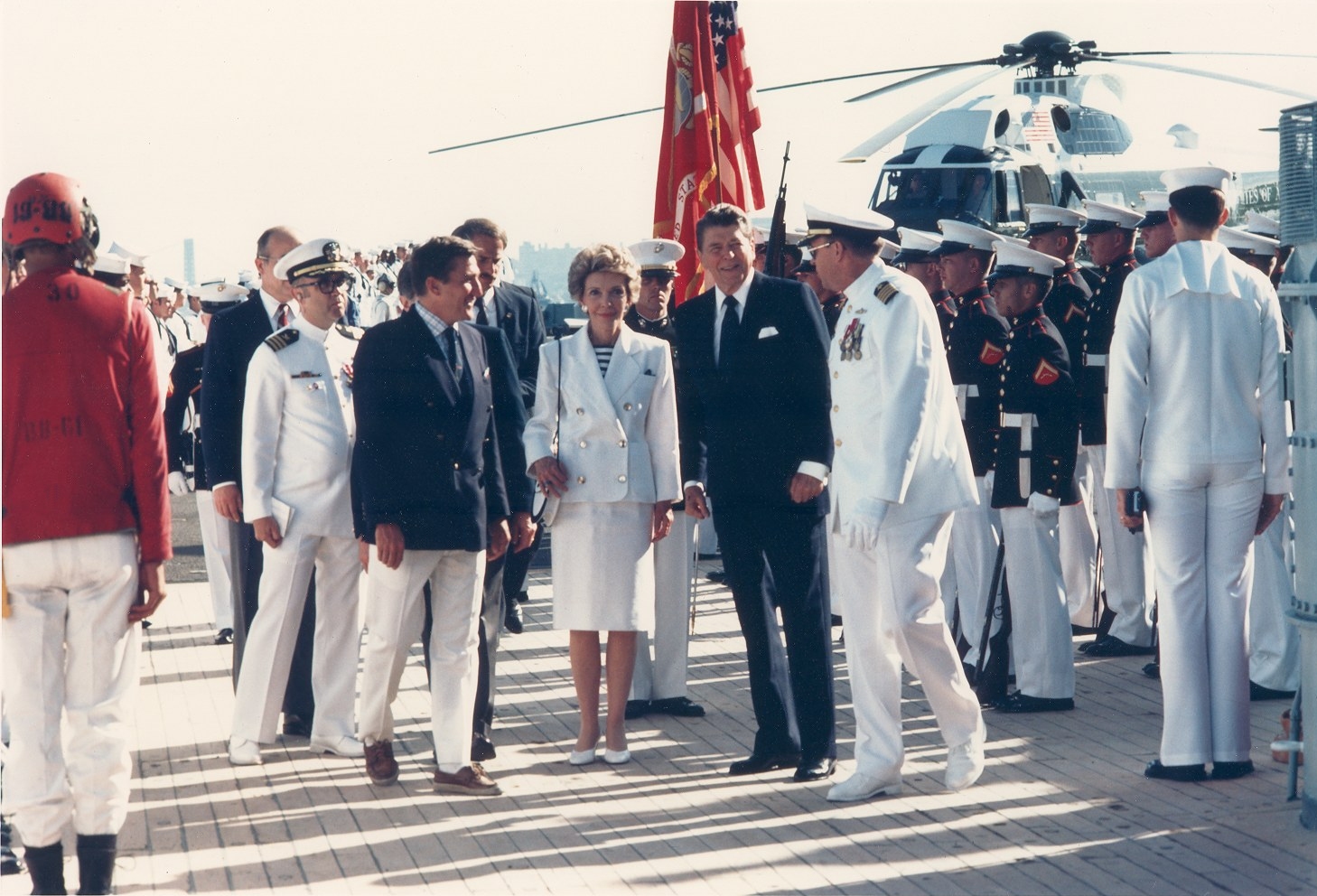
It is debatable whether the Maritime Strategy or the 600-ship goal would have done so well as separate entities. There were plenty of influential opponents to both including former CIA director and naval analyst Admiral Stansfield Turner, former Carter administration Undersecretary of Defense for Policy “Blowtorch” Bob Komer, and renowned University of Chicago political scientist John Mearsheimer. Despite the efforts of these individuals and others, the Maritime Strategy and the 600-ship navy endured until the collapse of the Soviet Union consigned both to the past in a post-Cold War era without a peer competitor.
The Current Strategic Foundation
The holiday from history of the last 25 years is over and it is time to get back to the business of properly preparing for global great power competition. A Trump administration 350-ship navy could be part of the process by which the U.S. operates in the new, post-Cold War world. Numbers alone, however, are vulnerable to cuts by analysts seeking the lowest common denominator navy. Likewise, naval strategies without specific ship counts and powerful civilian and uniformed leaders to explain them to Congress also tend to run aground on the shoals of Congressional analyses offices. As naval historian CAPT Peter Haynes, USN (ret) has suggested, “A strategy without a resource plan isn’t one.” Congress does not always understand or support naval strategy, and instead talks in terms of platform numbers and line items. The legislature will, however, support a given number if good strategic arguments are leveled in its support. Any new ship count proposed by the incoming Trump administration must be accompanied by a strong, well-articulated global maritime strategy.
Solid foundations already exist on which to construct a new maritime strategy. Chief of Naval Operations (CNO) Admiral John Richardson’s “Design for Maintaining Maritime Superiority” is the first step in that process. More than a mission statement, but less than a full strategy, it commands the Navy to:
“Make our best initial assessment of the environment, formulate a way ahead, and move out. But as we move, we will continually assess the environment, to ensure that it responds in a way that is consistent with achieving our goals. Where necessary, we will make adjustments, challenging ourselves to approach the limits of performance.”
CNOs have written such documents in the past. Admiral Kelso’s first foray into the post-Cold War era was entitled, “The Way Ahead,” a document co-authored with Marine Corps Commandant General Alfred Gray and endorsed by Navy Secretary H. Lawrence Garrett. It had a similar goal to Admiral Richardson’s guidance in that it exhorted its readers to, “maintain maritime superiority well into the 21st century,” and to accomplish this through, “our full range of skill and knowledge as practitioners of the art of naval warfare.” Finally, it suggested that, “The old excuse—‘Because that’s the way we’ve always done it’— no longer will do. We must work to shape and guide the forces of change in the direction that best serves the needs of our nation.” Clearly the “Design for Maintaining Maritime Superiority” and “The Way Ahead” both serve to inform the Navy that while the mission remains much the same, new challenges await and old methods of doing business may not work. The Navy must be able to adjust and do so boldly.
The current Navy “Cooperative Strategy for 21st Century Seapower”(CS21R) is a strong step toward a maritime strategy with operational warfighting components, a key element of the success of the 1980s Maritime Strategy. This document and its 2007 predecessor (CS21) both sought to describe the global commitment required by the U.S. to secure the global commons for safe and free trade. The 2015 version gave more detailed descriptions of force structure, specific forward locations required to achieve U.S. and Allied goals, and explicitly identified key competitors such as Russia and China.
Upgunning Strategy
What is required now is “the next step.” This new document should be a global maritime strategy that in the words of former U.S. Naval War College Dean of Naval Warfare CAPT Robert C “Barney” Rubel, USN (ret) would serve as “A contingent warfighting doctrine,” that proposes how the U.S. Navy will combat the “4+1” cohort of current and potential opponents across a global battle space.” The 1980s Maritime Strategy performed this role and laid out specific strategic and operational goals for U.S. Navy, Joint, and Allied forces in a global war against the Soviet Union, and all the phases of conflict leading to that eventuality. The Maritime Strategy cited national military strategy, regional command war plans, and specific Presidential national security directives as its core principles. It cited specific geographic objectives, Allied strategy, and specific war aims across the full spectrum of potential conflict with the Soviet Union. Later versions of the Maritime Strategy included contingency plans for operations against regional opponents that might not be mere Soviet surrogates. The level of detail within the 1980s Maritime Strategy crystalized the role of naval forces within the joint force, justified naval power within higher-level national security guidance, provided clear and consistent operational goals to guide war planning, and was unabashedly offensive in taking the fight to the enemy. These specific traits should animate the next maritime strategy.
Integrating the Joint Force
Such a strategic undertaking will likely be more challenging in the present era. The 1980s Maritime Strategy was largely produced before the passage of the Goldwater Nichols Act of 1986 that decreed all U.S. military operations were to be “joint” in character. While the Maritime Strategy was joint in design and execution and its drafting team included members from the other services in the latter 1980s, it was the frequent target of interservice criticism that accused the Navy of “going it alone” in its plan to wage global war against the Soviets. A new maritime strategy must be a joint one, but the other services must also recognize the differences between the 1980s and the present. There are no longer any large U.S. ground force formations deployed on hostile borders needing resupply as in the 1980s. While the seat of purpose may be on land and Eisenhower may have once proclaimed the end of separate ground, sea and air warfare in the future, those paradigms may be shifting. The existence of predominantely maritime hotspots such as the South China Sea, the Strait of Hormuz, and the waters of Yemen warrants innovative thinking in employing the joint force with specific attention on incorporating ground forces in maritime conflict.
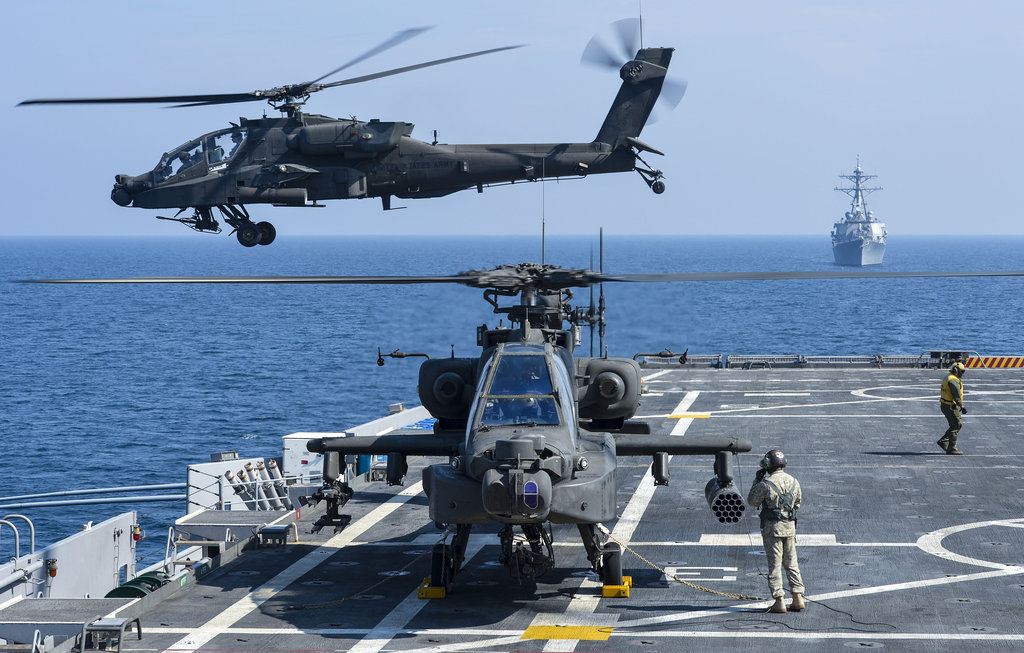
Employment of U.S. ground forces is more likely to be part of a larger maritime operation as suggested by British strategist Sir Julian Corbett and more bluntly stated by British Foreign Secretary Sir Edward Grey who famously suggested that the British Army, “should be projectile to be fired by the Royal Navy.” PACOM commander Admiral Harry Harris has suggested the U.S. Army can support operations in the Pacific region by fielding land-based anti-ship missiles, a powerful capability that Russia and China already field in abundance and in forward locations. This image of U.S. Army coastal artillery “on steroids” would need to be balanced with larger national strategic needs that require an effective expeditionary ground warfare capability that includes both Army and Marine Corps units when needed. This changed vision of ground operations as auxiliary to war at sea must be considered in a new joint maritime strategy.
Strengthening Operational Alliances
Today’s opponents are a more diverse and capable group requiring an allied vice just a U.S. response. A 21st century maritime strategy would no doubt be a more complex document than its 1980s-era predecessor. The 1980s strategy dealt essentially with one opponent (the Soviet Union), while its 21st century cousin would have to assess multiple combinations of the 4+1 group across several different continuum of conflict. Different sets of active opponents would require differing desired outcomes and end states, as well as preparing for widely varying contingencies. The urgency of the threats posed by the U.S. 4+1 list of opponents might not also have the same urgency across allies and partners.
Still, there is great potential for global maritime strategic action. The recent US/UK/Japanese Trilaterial Maritime Talks resulted in an agreement where these three maritime powers, “Recognized this opportunity to strengthen maritime contributions for achieving mutually desired strategic effects,” (emphasis added). The United States and the United Kingdom already share one of the closest military relationships of any two independent sovereign states, where only British officers may fly F-18 Super Hornet strike missions and the Royal Navy’s “Perisher” submarine training course is the only non-U.S. curriculum eligible for qualifying U.S. Navy submarine commanders. This relationship might further develop in terms of global strategic cooperation with Britain and perhaps France providing a rotational aircraft carrier presence in support of a global Allied maritime strategy. The UK’s Royal Navy has already made a step in this direction with the opening of HMS Juffair, a naval installation in the Kingdom of Bahrain that marks the return of British naval installations in the Middle East after an absence of four decades.
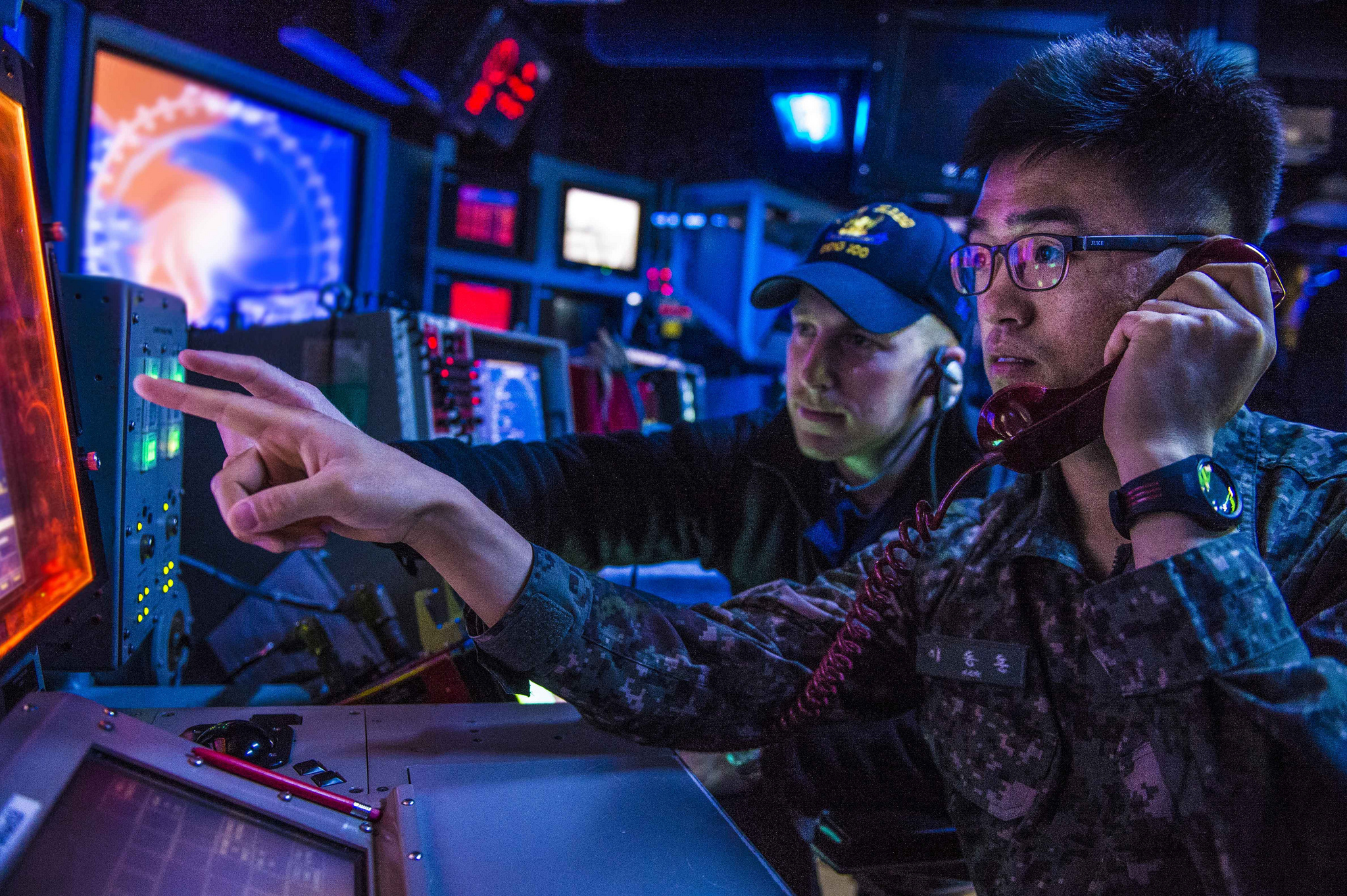
No one state can effectively maintain the command of the commons necessary for free trade over maritime highways, and nothing will increase force structure faster than building meaningful operational relationships with allies. Maritime security was recognized as a global concern a decade ago in the U.S. 2007 Cooperative Maritime Strategy and general concepts like the “1000 ship navy” must evolve into operational and tactically competent formations.
The Global Maritime Partnerships initiative focused on performing constabulary missions such as maritime security, counterpiracy, and drug interdiction with a broad set of partners irrespective of capability. While undoubtedly valuable, this line of effort was devised in a time when great power competition was not so marked and partnership with less capable navies would not come at the expense of conventional deterrence. The emphasis should now shift towards honing high-end warfighting capabilities by strengthening interoperability with treaty allies. This could be accomplished through more frequent and complex joint exercises, technology transfers, wargaming, and increasing the proportion of officers from allied nations in international resident programs. This push for greater interoperability will support the incoming administration’s intent to increase allied burden sharing while still demonstrating tangible American commitment to alliances. These cooperative steps cited here are hopefully the first of many leading to the return of unified Allied maritime commands such as the Cold War-era Supreme Allied Commander, Atlantic (SACLANT).
Communicating Strategy
Navy Secretary John Lehman described strategy as, “The logical set of allocations and priorities that guide how the Navy Department spends its money and trains its people.” Lehman and the maritime strategy authors campaigned vigorously and effectively to further its goals and meet its requirements. Lehman published widely on the Maritime Strategy in print and defended it in media outlets. Uniformed officers took on critics and published extensive works on its genesis and evolution. These efforts continue into the present day long after Admiral Kelso retired the Maritime Strategy. A new document will likewise require an aggressive and comprehensive communications campaign across multiple formats including print, video, and digital outlets. It must educate a global audience and key decision makers on 21st century strategic geography, how naval power contributes to the national interest, and the need to protect the world-wide maritime trade routes that sustain not only U.S. but global economic prosperity and security.
Keeping it Affordable
The leadership of the 1980s navy was fortunate in that much of the technological advancement needed for the 600-ship navy such as the AEGIS system had been completed in the previous decade. Most of the 600-ship navy building programs had commenced before the passage of the Goldwater Nichols Act of 1986, enabling the service to have greater control and less bureaucratic interference in its overall maritime design. Recent defense reform efforts have identified excessive bureaucracy as an impediment to cost effective military platforms.
An expansion of the fleet today will be more challenging in that many fields of technological advance are still struggling toward maturity. The naval service has been somewhat neglected over the last 25 years in terms of maintenance and operational costs. Assessments such as the Balisle report of 2010 and more recent examinations suggest the situation may not immediately improve. In addition, many new technologies and concepts such as electric drives, modular systems, greater automation and smaller crews remain operationally immature to a degree. Other emerging systems such as directed energy weapons and railguns are on the cusp of operational capability, but will require more funding and testing in order to join the fleet’s future arsenal. A new Maritime Strategy and associated force will need to navigate a series of choices from among these capabilities and decide which are “R&D rainbows” not worth producing, and which can become operational parts of the strategy-supporting force structure.
Reorganized for Strategy
The Navy is perhaps now better prepared to create a new maritime strategy than at any point since 1992 due to Admiral Richardson’s recent reorganization of the OPNAV staff. It is also better prepared to resist critics than its predecessor. The Navy Staff (OPNAV’s) new N50 Strategy Division combines the strategy experts of the N3/N5 Deputy CNO’s office with analysts from the N81 assessments divison. This union of disciplines should result in geography and international relations forming the foundation of a naval strategy that is also within the nation’s financial means to execute over time.
One of the most persistent claims leveled against the 1980s Maritime Strategy was that it was not “cost constrained” and assumed that a large and complex naval force could be sustained with limited funding. The Strategy and Assessments divisions of the OPNAV staff have been arguing this point for nearly half a century. Strategists argue for the importance of geography, history, and international relations as primary determinents for the development of successful naval policy. Their preferred force structures such as the 600-ship Navy of the 1980s respond directly to threat assessments and the geographic conditions that shape them. The analysis community often responds by suggesting that national resources do not support what the strategists wish to accomplish. They have advocated a policy of force structure and capability management over time as the best means of achieving a force that spends only what is absolutely required to achieve those goals. The 30-year shipbuilding plan is a product of this effort. The combined strategist/analyst composition of the newly formed N50 Strategy Division will serve as an excellent vehicle for wedding a new strategy to a new ship count and subsequently updated shipbuilding plan.
Conclusion
The election of Donald J. Trump to the Presidency of the United States represents a break with past policies as did that of Ronald W. Reagan in 1980 and offers the Navy an opportunity to make a fresh argument for a global warfighting strategy. Past U.S. joint force constructs that emphasized ground forces over naval forces are not as relevant as they were during the Iraq and Afghanistan wars at their heights. The present strategic situation suggests that the time is right for the U.S. Navy to come forward with a modern successor to the 1980s Maritime Strategy. The price tag for this endeavor will also have to be acceptable to the legislature and the public. The Navy must decide which of its emerging technologies and capabilities will be part of the strategy-supporting force and which will be cancelled or relegated to limited experimentation. The OPNAV staff is better organized now than in past decades to articulate and advance such a strategy. A 350-ship navy might be the right size to accomplish this goal, but it must have a strategy in close cooperation in order to convince Congress that 350 ships or even greater numbers are required. The incoming Trump administration should demand a global naval strategy to accompany its proposed increase in fleet strength in order to achieve its goal of a superior U.S. Navy.
Steve Wills is a retired surface warfare officer and a PhD candidate in military history at Ohio University. His focus areas are modern U.S. naval and military reorganization efforts and British naval strategy and policy from 1889-1941.
Featured Image: 161014-N-OI810-449 WATERS SURROUNDING THE KOREAN PENINSULA (Oct. 14, 2016) The Navy’s only forward-deployed aircraft carrier, USS Ronald Reagan (CVN 76), steams in formation with ships from Carrier Strike Group Five (CSG 5) and the Republic of Korea Navy (ROKN) during Exercise Invincible Spirit. Invincible Spirit is a bilateral exercise conducted with the ROKN in the waters near the Korean Peninsula, consisting of routine operations in support of maritime counter-special operating forces and integrated maritime operations. (U.S. Navy photo by Petty Officer 3rd Class Nathan Burke/Released)



